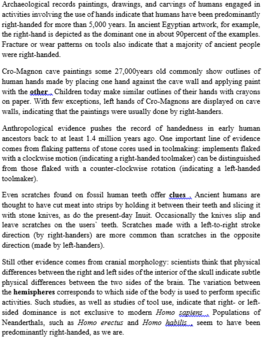Read the following passage and mark the letter A, B, C, or D on your answer sheet to indicate the correct answer to each of the questions from 36 to 42.
It used to be that people would drink coffee or tea in the morning to pick them up and get them going for the day. Then cola drinks hit the market. With lots of caffeine and sugar, these beverages soon became the pick-me-up of choice for many adults and teenagers. Now drink companies are putting out so-called "energy drinks." These beverages have the specific aim of giving tired consumers more energy.
One example of a popular energy drink is Red Bull. The company that puts out this beverage has stated in interviews that Red Bull is not a thirst quencher. Nor is it meant to be a fluid replacement drink for athletes. Instead, the beverage is meant to revitalize a tired consumer’s body and mind. In order to do this, the makers of Red Bull, and other energy drinks, typically add vitamins and certain chemicals to their beverages. The added chemicals are like chemicals that the body naturally produces for energy. The vitamins, chemicals, caffeine, and sugar found in these beverages all seem like a sure bet to give a person energy.
Health professionals are not so sure, though. For one thing, there is not enough evidence to show that all of the vitamins added to energy drinks actually raise a person’s energy level. Another problem is that there are so many things in the beverages. Nobody knows for sure how all of the ingredients in energy drinks work together.
Dr. Brent Bauer, one of the directors at the Mayo Clinic in the US, cautions people about believing all the claims energy drinks make. He says, - It is plausible if you put all these things together, you will get a good result.” However, Dr. Bauer adds the mix of ingredients could also have a negative impact on the body. - We just don’t know at this point,” he says.
The word “it” in the second paragraph refers to ______.
A. one example
B. the company
C. Red Bull
D. thirst quencher








Đáp án C
It = Red Bull